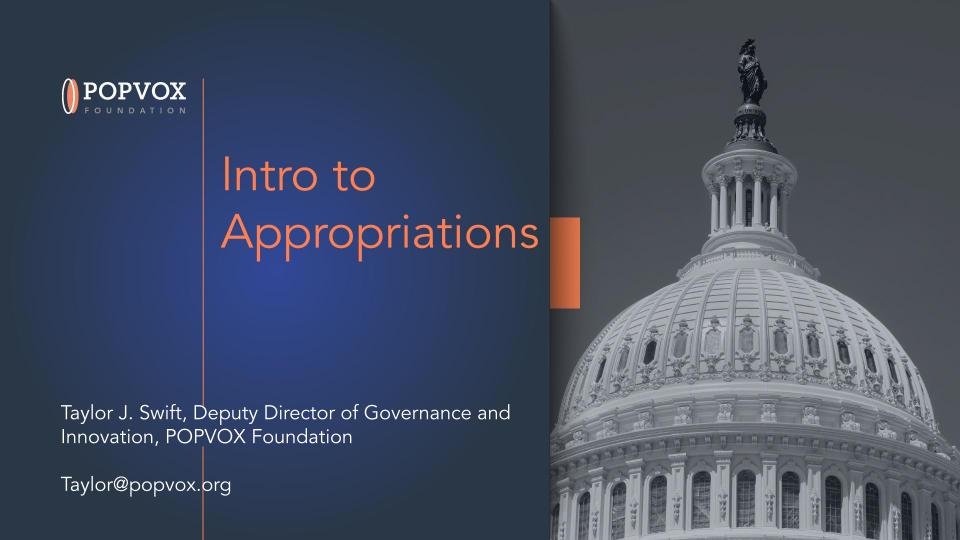Highlights from “Demystifying the Appropriations Process: A Guide for Junior Staffers”
BY TAYLOR J. SWIFT
On February 29, POPVOX Foundation, in collaboration with the Modernization Staff Association, hosted a virtual event demystifying the appropriations process for junior Congressional staffers to provide them with a deeper understanding of the appropriations process and to empower them with the knowledge and skills needed to effectively support their Members and contribute to the legislative process.
POPVOX Foundation Deputy Director of Governance and Innovation Taylor J. Swift was joined in the conversation by:
Terra Sabag, Director of Senior Legislative Leadership, Learning and Development at the House of Representatives’ Office of the Chief Administrative Officer
Zack Brown, former Communications Director for Former Rep. Don Young [R, AK]
Appropriations 101
The session was designed to offer junior staffers a high-level overview of the appropriations process, including key terms and distinctions between mandatory and discretionary spending. Swift opened by highlighting the critical role of the appropriations cycle in funding government operations, implementing policies, ensuring fiscal responsibility, and maintaining checks and balances. Swift’s presentation also covered the nuances of different types of appropriations legislation, such as continuing resolutions (CRs), supplemental appropriations, and omnibus bills, underscoring the frequent use of CRs to prevent government shutdowns.
Best Practices for Junior Staffers
Expert panelists Terra Sabag and Zach Brown shared their extensive experience and practical advice on navigating the appropriations process effectively. Sabag drew upon her decades of experience on Capitol Hill to emphasize the importance of being organized, understanding key terms and dates, and actively engaging in the process throughout the entire cycle. She also highlighted the significance of language requests and community project funding as vital tools for Congressional staff to support their Members' priorities.
Brown provided insights into the strategic communication aspects of the appropriations process based on his experience as the former communications director for the late Rep. Don Young. He stressed the importance of keeping constituents informed and engaged, learning from resources shared by lobbyists and advocacy groups, and the critical role of coalition building to advance legislative priorities. Brown also touched on the importance of bipartisanship and understanding one’s role when their office is in the minority compared to the majority.
Q&A
The session concluded with a Q&A segment, where attendees had the opportunity to delve deeper into specific aspects of the appropriations process, such as understanding the interaction between House and Senate appropriation subcommittees, the role of junior staffers and interns when developing an office’s list of appropriations proposals, best practices for reading bills and report language, and collaboration strategies for dealing with a divided government.

